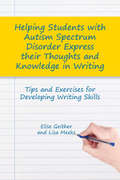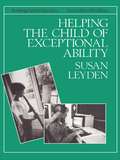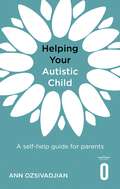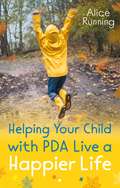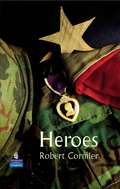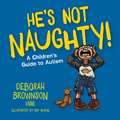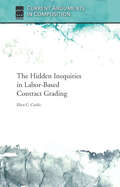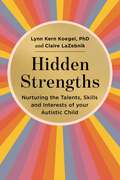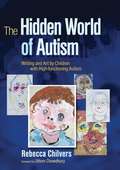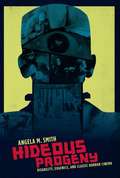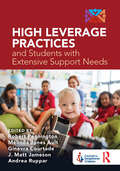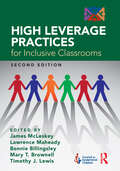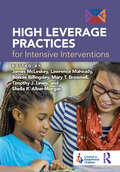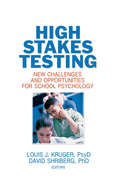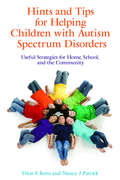- Table View
- List View
Helping Students with Autism Spectrum Disorder Express their Thoughts and Knowledge in Writing: Tips and Exercises for Developing Writing Skills (PDF)
by Elise Geither Lisa M. MeeksWhen it comes to academic work, students with Autism Spectrum Disorder (ASD) often have the required knowledge but struggle to get their thoughts down in writing. This is a practical guide to teaching and improving writing skills in students with ASD to meet academic writing standards and prepare for the increased expectations of higher education. The book covers key considerations for all educators teaching writing skills to high school and college students with ASD including how to address difficulties with comprehension, executive functioning, and motor skills, how to structure ideas into a coherent argument, and how to develop creativity and expression in writing, as well as how to successfully adapt these skills to meet university expectations. Each chapter includes teaching tips, insightful student perspectives, and ready-to-use writing exercises.
Helping Students with Autism Spectrum Disorder Express their Thoughts and Knowledge in Writing: Tips and Exercises for Developing Writing Skills
by Lisa M. Meeks Elise GeitherWhen it comes to academic work, students with Autism Spectrum Disorder (ASD) often have the required knowledge but struggle to get their thoughts down in writing. This is a practical guide to teaching and improving writing skills in students with ASD to meet academic writing standards and prepare for the increased expectations of higher education. The book covers key considerations for all educators teaching writing skills to high school and college students with ASD including how to address difficulties with comprehension, executive functioning, and motor skills, how to structure ideas into a coherent argument, and how to develop creativity and expression in writing, as well as how to successfully adapt these skills to meet university expectations. Each chapter includes teaching tips, insightful student perspectives, and ready-to-use writing exercises.
Helping the Child with Exceptional Ability
by Susan LeydenFirst Published in 1985. Routledge is an imprint of Taylor & Francis, an informa company.
Helping the Child with Exceptional Ability (Special Education Ser.)
by Susan LeydenFirst Published in 1985. Routledge is an imprint of Taylor & Francis, an informa company.
Helping Your Autistic Child: A self-help guide for parents (Helping Your Child)
by Ann OzsivadjianPractical, evidence-based advice for managing distressed behaviours and common situations involving autistic children. Autism affects about one per cent of the population, and whilst it can present very differently among individuals, there are some common challenges faced by autistic people. This self-help guide focuses on practical, proven techniques to help parents support their autistic children with commonly experienced areas of difficulty. Written by authors with extensive experience in research and in working clinically with children with a wide range of neurodevelopmental differences, this book uses a strengths-based approach to guide parents in helping their children to enhance their skills, as well as to manage some common challenges.This book will help you to: · Support your child through anxiety and social interaction issues · Manage sleep problems and feeding difficulties · Understand sensory responses in autism · Understand and manage distressed behaviour, including self-harm and demand avoidanceHelping Your Child is a series for parents and caregivers to support children through developmental difficulties, both psychological and physical. Each guide uses clinically proven techniques. Series editors: Dr Polly Waite and Emeritus Professor Peter Cooper
Helping Your Child with PDA Live a Happier Life
by Alice RunningDrawing on the author's personal experience of parenting a child with PDA, this insightful and informative guide offers strategies and tips for all aspects of daily life, including sensory issues, education and negotiation.Full of advice and support, this book is not intended to provide information on how to change your children. Rather, it is focused on creating the type of environment that will allow children to be authentically themselves, thereby enabling them to flourish and thrive.
Helping Your Child with PDA Live a Happier Life
by Alice RunningDrawing on the author's personal experience of parenting a child with PDA, this insightful and informative guide offers strategies and tips for all aspects of daily life, including sensory issues, education and negotiation.Full of advice and support, this book is not intended to provide information on how to change your children. Rather, it is focused on creating the type of environment that will allow children to be authentically themselves, thereby enabling them to flourish and thrive.
Heroes Hardcover Educational Edition (PDF)
by S. E. Hinton Robert CormierWhen Francis Cassavant returns to his home town, his face horribly disfigured during World War II, he is tormented by memories of the conflict. People believe him to be a teenage war hero, not realising that his act of ?heroism? was in fact a suicide attempt. Back home, Francis has a mission ? to get revenge on the youth leader he idolised, but betrayed him. And he?s prepared to do whatever it takes. What are the themes? Heroism, conflict, struggle against evil, guilt, forgiveness, loneliness, loyalty. Teaching points This short novel, with its gripping plot and engaging themes, is accessible to a wide range of abilities. Provides excellent opportunities for exploring structure and narrative viewpoint.
He’s Not Naughty!: A Children’s Guide to Autism
by Deborah BrownsonTaryn and Jake are best friends who have lots of similarities and lots of differences. One of the differences is that Jake has autism and Taryn doesn't, which means they can act differently sometimes. Taryn knows that people with autism are often mistaken for being naughty when it's actually a natural way for their brain to react. Fed up with everyone not understanding, Taryn decides to let the world know why Jake isn't naughty! Join Taryn as she candidly explains her understanding of autism, and why there's always a reason behind everything Jake does.This distinctively illustrated book is a quick and quirky way to explain to friends and family why children with autism behave the way they do. Unique visuals provide a great sense of what it's truly like to have autism, making this the perfect book for children aged 6-10 to learn about autism.
The Hidden Inequities in Labor-Based Contract Grading (Current Arguments in Composition)
by Ellen C. CarilloCurrent Arguments in Composition Series The Hidden Inequities in Labor-Based Contract Grading intervenes in the increasingly popular practice of labor-based grading by expanding the scope of this assessment practice to include students who are disabled and multiply marginalized. Through the lens of disability studies, the book critiques the assumption that labor is a neutral measure by which to assess students and explores how labor-based grading contracts put certain groups of students at a disadvantage. Ellen C. Carillo offers engagement-based grading contracts as an alternative that would provide a more equitable assessment model for students of color, those with disabilities, and students who are multiply marginalized. This short book explores the history of labor-based grading contracts, reviews the scholarship on this assessment tool, highlights the ways in which it normalizes labor as an unbiased tool, and demonstrates how to extend the conversation in new and generative ways both in research and in classrooms. Carillo encourages instructors to reflect on their assessment practices by demonstrating how even assessment methods that are designed through a social-justice lens may unintentionally privilege some students over others.
Hidden Strengths: Nurturing the talents, skills and interests of your autistic child
by Lynn Koegel Claire LaZebnikA groundbreaking, long overdue book that explains how to identify your autistic child's strengths and abilities and then use them as a tool for social communication, improved learning, and overall growth.The strengths of children and young adults diagnosed with ASD are commonly overlooked, even by trained professionals. Outdated attitudes, lack of sufficient training and an overreliance on standardised testing works against recognising their capabilities.Focusing on the importance of motivation strategies, Hidden Strengths shows you how to build on every autistic child's interests and strengths. Through real-life stories of individuals whose innate abilities blossomed once they were acknowledged, this book dispels unhelpful stereotypes and will help you unlock your child's potential. It also aims to educate the wider community in how to support, accept and embrace the gifts autistic individuals offer. 'Will help both parents and teachers find and develop a child's unique skills in memory, music, math, art, and attention to details. Development of these skills can lead to both a more rewarding life and possible careers' Temple Grandin, PhD, New York Times bestselling author
The Hidden World of Autism: Writing and Art by Children with High-functioning Autism (PDF)
by Rebecca Chilvers Uttom ChowdhuryA celebration of the talents and insights of children on the autism spectrum, The Hidden World of Autism presents a collection of writings and drawings contributed by 21 autistic children. The children's work covers topics that are of primary importance in understanding some of the common experiences that children with autism, and their families, go through. These include life before diagnosis, friendships, relationships, feelings, bullying and the future. A key characteristic of having autism is the inability to express emotions; but too often that prevents children with autism from being listened to. This book gives them both a voice and a forum for creative expression and provides direct insight into what having autism means for the children themselves and how they feel about their experiences. This unique collection provides invaluable insights into the autistic experience for professionals, families and friends of children with autism, as well as the children themselves.
Hide and Seek: A Grammar Tales Book To Support Grammar And Language Development In Children (Grammar Tales)
by Jessica HabibPete, Jem and Belle play hide and seek. Pete has a very good hiding spot – will they ever find him? Targeting Subject-Verb-Object sentences and prepositions, this book provides repeated examples of early developing syntax and morphology which will engage and excite the reader while building pre-literacy skills and make learning fun, as well as exposing children to multiple models of the target grammar form. Perfect for a speech and language therapy session, this book is an ideal starting point for targeting client goals and can also be enjoyed at school or home to reinforce what has been taught in the therapy session.
Hide and Seek: A Grammar Tales Book to Support Grammar and Language Development in Children (Grammar Tales)
by Jessica HabibPete, Jem and Belle play hide and seek. Pete has a very good hiding spot – will they ever find him? Targeting Subject-Verb-Object sentences and prepositions, this book provides repeated examples of early developing syntax and morphology which will engage and excite the reader while building pre-literacy skills and make learning fun, as well as exposing children to multiple models of the target grammar form. Perfect for a speech and language therapy session, this book is an ideal starting point for targeting client goals and can also be enjoyed at school or home to reinforce what has been taught in the therapy session.
Hideous Progeny: Disability, Eugenics, And Classic Horror Cinema (PDF) (Film And Culture Ser.)
by Angela SmithIntroduction: disability, eugenics, and classic horror cinema -- Eugenic reproduction: chimeras in Dracula and Frankenstein -- Enfreaking the classic horror genre: freaks -- Revelations and convulsions: spectacles of impairment in classic horror film -- Mad medicine: disability in the mad-doctor films -- Shock horror and death rays: disabling spectatorship -- Conclusion.
High Leverage Practices and Students with Extensive Support Needs
by Robert Pennington Melinda Jones Ault Ginevra Courtade J. Matt Jameson Andrea RupparBuilding on the formative work of High Leverage Practices (HLP) for Inclusive Classrooms, this critical companion explores how HLP can be applied to the education of students with extensive support needs (ESN). Each chapter walks readers through a different HLP, exploring its implications for students with ESN and aligning it with current practice, supports, and terminology. Edited by researchers and teacher educators with decades of experience in serving students with ESN and their teachers, this book is packed with rich examples of and detailed supports for implementing HLPs to ensure every student has access to all aspects of their school community.
High Leverage Practices and Students with Extensive Support Needs
by Robert Pennington Melinda Jones Ault Ginevra Courtade J. Matt Jameson Andrea RupparBuilding on the formative work of High Leverage Practices (HLP) for Inclusive Classrooms, this critical companion explores how HLP can be applied to the education of students with extensive support needs (ESN). Each chapter walks readers through a different HLP, exploring its implications for students with ESN and aligning it with current practice, supports, and terminology. Edited by researchers and teacher educators with decades of experience in serving students with ESN and their teachers, this book is packed with rich examples of and detailed supports for implementing HLPs to ensure every student has access to all aspects of their school community.
High Leverage Practices for Inclusive Classrooms
by James McLeskey, Lawrence Maheady, Bonnie Billingsley, Mary T. Brownell, and Timothy J. LewisHigh Leverage Practices for Inclusive Classrooms, Second Edition offers a set of practices that are integral to the support of student learning, and that can be systematically taught, learned, and implemented by those entering the teaching profession. In this second edition, chapters have been fully updated to reflect changes in the field since its original publication, and feature all new examples illustrating the use of HLPs and incorporating culturally responsive practices. Focused primarily on Tiers 1 and 2—or work that mostly occurs with students with mild to moderate disabilities in general education classrooms—this powerful, research-based resource provides rich, practical information highly suitable for teachers, and additionally useful for teacher educators and teacher preparation programs.
High Leverage Practices for Inclusive Classrooms
by Tim Lewis James McLeskey Larry Maheady Bonnie Billingsley Mary BrownellHigh Leverage Practices for Inclusive Classrooms, Second Edition offers a set of practices that are integral to the support of student learning, and that can be systematically taught, learned, and implemented by those entering the teaching profession. In this second edition, chapters have been fully updated to reflect changes in the field since its original publication, and feature all new examples illustrating the use of HLPs and incorporating culturally responsive practices. Focused primarily on Tiers 1 and 2—or work that mostly occurs with students with mild to moderate disabilities in general education classrooms—this powerful, research-based resource provides rich, practical information highly suitable for teachers, and additionally useful for teacher educators and teacher preparation programs.
High Leverage Practices for Intensive Interventions
by James McLeskey Lawrence Maheady Bonnie Billingsley Mary T. Brownell Timothy J. Lewis Alber-Morgan, Sheila R.High Leverage Practices for Intensive Interventions provides special education teachers with descriptions and practical instructions on how to use High Leverage Practices (HLPs) to improve student outcomes. Since many students with disabilities spend their school day in inclusive general education classrooms, these intensive interventions are often delivered in separate or tier 3 settings to meet the students’ individualized needs. Each chapter focuses on a specific High Leverage Practice with explanations of its purpose and essential components, accompanied by examples for use with small groups of students or the individual student. This accessible and comprehensive guide is key for pre-service teachers in special education programs or those who provide intensive interventions with students.
High Leverage Practices for Intensive Interventions
High Leverage Practices for Intensive Interventions provides special education teachers with descriptions and practical instructions on how to use High Leverage Practices (HLPs) to improve student outcomes. Since many students with disabilities spend their school day in inclusive general education classrooms, these intensive interventions are often delivered in separate or tier 3 settings to meet the students’ individualized needs. Each chapter focuses on a specific High Leverage Practice with explanations of its purpose and essential components, accompanied by examples for use with small groups of students or the individual student. This accessible and comprehensive guide is key for pre-service teachers in special education programs or those who provide intensive interventions with students.
High Stakes Testing: New Challenges and Opportunities for School Psychology
by Louis J. Kruger David ShribergMeet the challenges of high stakes testing in the practice of school psychology School psychologists can be a positive influence on how students, teachers, parents, schools, and communities cope with the challenges and opportunities associated with high stakes testing. Unfortunately, there has been a significant lack of literature to guide school psychologists and related school-based practitioners on this topic. High Stakes Testing: New Challenges and Opportunities for School Psychology is a timely groundbreaking book that provides useful and thought-provoking information to help psychologists meet the challenges of high stakes testing and create new roles for themselves in helping children succeed. This book discusses practical ways to help provide academic support to facilitate student success on high stakes tests, reduce the impact of stress associated with high stakes testing, assess the data from the tests to improve programs, and take a leadership role in the appropriate use of the tests. The No Child Left Behind Act of 2001(NCLB) and its accountability provisions has helped create and sustain a climate where student performance on state-created achievement tests often has high stakes implications for students, families, and schools. High Stakes Testing: New Challenges and Opportunities for School Psychology provides important background information about high stakes testing, including the legal, historical, and political context of high stakes testing, pertinent psychometrics, and a review of research on academic and non-academic outcomes as it relates to high stakes testing. Using this information as a foundation, the book then identifies new roles and opportunities for school psychologists with respect to high stakes testing. This book is comprehensively referenced. Topics in High Stakes Testing: New Challenges and Opportunities for School Psychology include: advocating for the appropriate use of state-wide assessments the influence of item response theory (IRT) on the development of high stakes tests whether the accountability system of NCLB is truly improving student&’s learning the impact of high stakes tests on classroom instruction and student motivation strategies for helping students succeed on high stakes tests available resources to cope with the stress of high stakes testing and more High Stakes Testing: New Challenges and Opportunities for School Psychology is a thought-provoking, horizon-expanding resource for school psychologists, public school educators, administrators, school counselors, curriculum coordinators, and special education teachers involved in organizing, administering, and preparing students to take high stakes tests.
High Stakes Testing: New Challenges and Opportunities for School Psychology
by Louis J. Kruger David ShribergMeet the challenges of high stakes testing in the practice of school psychology School psychologists can be a positive influence on how students, teachers, parents, schools, and communities cope with the challenges and opportunities associated with high stakes testing. Unfortunately, there has been a significant lack of literature to guide school psychologists and related school-based practitioners on this topic. High Stakes Testing: New Challenges and Opportunities for School Psychology is a timely groundbreaking book that provides useful and thought-provoking information to help psychologists meet the challenges of high stakes testing and create new roles for themselves in helping children succeed. This book discusses practical ways to help provide academic support to facilitate student success on high stakes tests, reduce the impact of stress associated with high stakes testing, assess the data from the tests to improve programs, and take a leadership role in the appropriate use of the tests. The No Child Left Behind Act of 2001(NCLB) and its accountability provisions has helped create and sustain a climate where student performance on state-created achievement tests often has high stakes implications for students, families, and schools. High Stakes Testing: New Challenges and Opportunities for School Psychology provides important background information about high stakes testing, including the legal, historical, and political context of high stakes testing, pertinent psychometrics, and a review of research on academic and non-academic outcomes as it relates to high stakes testing. Using this information as a foundation, the book then identifies new roles and opportunities for school psychologists with respect to high stakes testing. This book is comprehensively referenced. Topics in High Stakes Testing: New Challenges and Opportunities for School Psychology include: advocating for the appropriate use of state-wide assessments the influence of item response theory (IRT) on the development of high stakes tests whether the accountability system of NCLB is truly improving student&’s learning the impact of high stakes tests on classroom instruction and student motivation strategies for helping students succeed on high stakes tests available resources to cope with the stress of high stakes testing and more High Stakes Testing: New Challenges and Opportunities for School Psychology is a thought-provoking, horizon-expanding resource for school psychologists, public school educators, administrators, school counselors, curriculum coordinators, and special education teachers involved in organizing, administering, and preparing students to take high stakes tests.
Hints and Tips for Helping Children with Autism Spectrum Disorders: Useful Strategies for Home, School, and the Community
by Dion Betts Nancy J PatrickIf you have a child on the autism spectrum who struggles with the challenges of daily life, then this book is for you! Hints and Tips… is peppered with vignettes and stories of real-life situations and successes, and offers clever ideas for tackling everyday difficulties, such as bathing, bedtime, school trips, and selecting the right child minder. Dion E. Betts and Nancy J. Patrick provide creative, practical strategies to help parents and caregivers to support their child, and to enable their child to develop the social skills needed to manage and enjoy daily life to the fullest. The book is split into five parts: home life, hygiene, community, medical, and schools and organizations. Common problem areas are also tackled in a toolkit section, which includes checklists, ‘to do’ lists, visual schedules, and mnemonics to aid memory and retrieval. Hints and Tips for Helping Children with Autism Spectrum Disorders is an essential aid for parents and carers to make small and simple changes that result in big improvements in the quality of life of children, their families, and carers.
Hints and Tips for Helping Children with Autism Spectrum Disorders: Useful Strategies for Home, School, and the Community (PDF)
by Dion Betts Nancy J PatrickIf you have a child on the autism spectrum who struggles with the challenges of daily life, then this book is for you! Hints and Tips… is peppered with vignettes and stories of real-life situations and successes, and offers clever ideas for tackling everyday difficulties, such as bathing, bedtime, school trips, and selecting the right child minder. Dion E. Betts and Nancy J. Patrick provide creative, practical strategies to help parents and caregivers to support their child, and to enable their child to develop the social skills needed to manage and enjoy daily life to the fullest. The book is split into five parts: home life, hygiene, community, medical, and schools and organizations. Common problem areas are also tackled in a toolkit section, which includes checklists, ‘to do’ lists, visual schedules, and mnemonics to aid memory and retrieval. Hints and Tips for Helping Children with Autism Spectrum Disorders is an essential aid for parents and carers to make small and simple changes that result in big improvements in the quality of life of children, their families, and carers.
